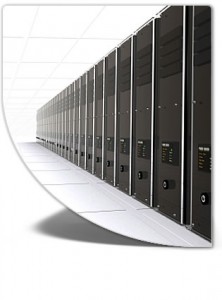Load Balance, Dedicated Servers and Hosting at SevenL Networks Data Center
Posted on February 5th, 2009
Load Balance, Dedicated Servers and Hosting at SevenL Networks Data Center
A growing number of online businesses and IT companies are turning to load-balancing their dedicated hosting servers with SevenL Networks and I thought I would take a moment to explain some of the reasons they’re doing it and why you may want to consider load balanced hosting. This article primarily refers to active-active load balancing.
Load Balancing Produces Overall Faster Response Times
For beginners, load balancing servers in its simplest of terms means two or more physical servers functioning as one. To website visitors, they really only see the end result – the website itself. But for high-traffic or multimedia intensive websites, slow load times can result in lost visitors and customers. There’s generally the option of going for a faster overall server or utilizing multiple servers in a load balancing scenario. It will speed up response times because data and calculations can be made by more than a single server. SevenL has load-balanced setups of 4 servers, and even more for very popular websites hosted within our data center. Think of load-balancing like you would a freeway and automobiles as website visitors. A single-lane road would probably result in some severe traffic jams, akin to slow website load times. A 5 lane freeway on the other hand allows for many more vehicles to pass through in a shorter amount of time. This is how load balanced dedicated servers function.
Load Balancing Provides More Stability
Using the same example above with the freeway and automobiles, imagine if a one-lane road were shutdown. No traffic could pass through. On the other hand, with load balancing, multiple lanes are available. If one lane is shutdown traffic can still pass through the others. It may be slower but you’re still getting traffic through to its destination. When a single server has a problem, such as a hardware failure, if it’s load-balanced then the other dedicated server(s) can take over and the website remains online. The problematic server can then be fixed and brought back online. Whereas when a single faster server has a hardware problem, it goes down as do your websites.
No Downtime When Upgrading Hardware
Since you will be using multiple servers in effect all acting as one, taking down a server to perform upgrades won’t cause your website to go down. Keep in mind that the site may experience slower load-times while the upgrade is occurring, but it won’t be offline all together. Another huge benefit of load balanced dedicated hosting is that you can add new servers to the pool without slowing down the site at all. Just have the new server configured and added to the load balanced setup and it’ll start sharing it’s load of traffic.
How Do You Know if or When You Should Load Balance?
One of the first things you should ask yourself is ‘what are my website load-times’? If the answer is ‘slow’ and you’ve eliminated bandwidth speeds as being part of the problem and if you’re already using a decent processor and large chunk of RAM, having a look at load balancing solutions might be a good idea. Perhaps log into your server and monitor the CPU utilization. Of course CPU isn’t the only factor… there are limits to the amount of memory your dedicated server can handle. When that’s maxed-out you should seriously consider adding a second, similar server and have load balancing set up for you. You will see immediate results when configured correctly. If you’re considering load balancing but aren’t sure if it’s necessary, contact SevenL for assistance. Sales@SevenL.net
Some Load Balanced Dedicated Hosting Server Plans with SevenL Networks
Here are 3 load balancing plans that SevenL offers. All can be customized to meet your exact needs.
2 Dedicated Server Load Balancing
3 Dedicated Server Load Balancing
4 Dedicated Server Load Balancing
Visit our website: www.7l.com

